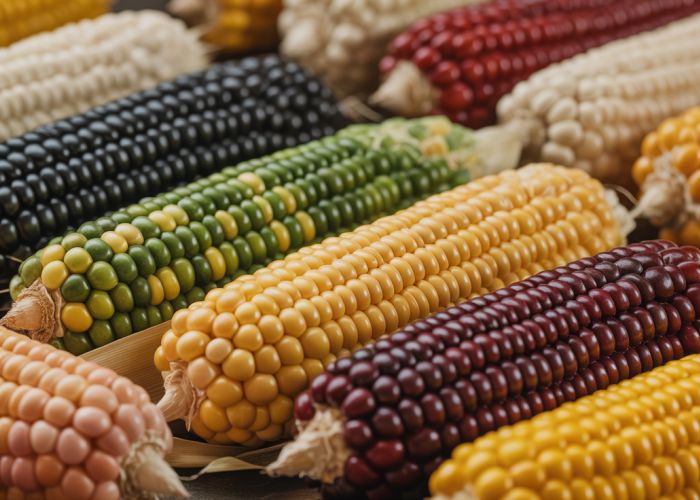The Poaceae family, closely tied to global agriculture, encompasses a vast array of grasses, including the economically vital crop identified by the maize family name. This categorization directly influences research at institutions like the International Maize and Wheat Improvement Center (CIMMYT), shaping breeding programs and conservation efforts. Genetic studies utilizing molecular markers are essential to understanding the relationships and diversity within the maize family name. This understanding enhances the ability of agricultural extension officers to provide informed guidance and facilitate the cultivation of improved maize varieties.

Decoding the "Maize Family Name": A Comprehensive Guide to Article Structure
This guide outlines the ideal structure for an article exploring the topic of "maize family name," focusing on optimizing it for readability and informational value. The keyword "maize family name" should be organically integrated throughout the content, not just stuffed in.
Defining the Scope: What Does "Maize Family Name" Entail?
The article needs to clearly define what we mean by "maize family name." This isn’t just about the scientific name; it’s about the complete taxonomic classification and the etymology behind it.
- Clarify Ambiguity: Address any potential misinterpretations. Does "family name" refer to the plant family, a specific cultivar family, or something else entirely?
- Set Expectations: Tell the reader upfront what the article will cover, for example: botanical classification, common names across cultures, and a brief history of naming conventions.
Unveiling the Botanical Classification: Poaceae
The core of the article lies in detailing maize’s scientific classification.
The Hierarchy: From Kingdom to Species
Present the complete taxonomic hierarchy in a clear and easy-to-understand manner. A table is highly recommended for this section.
| Rank | Taxon |
|---|---|
| Kingdom | Plantae |
| Clade | Tracheophytes |
| Clade | Angiosperms |
| Clade | Monocots |
| Clade | Commelinids |
| Order | Poales |
| Family | Poaceae (Grass Family) |
| Subfamily | Panicoideae |
| Tribe | Andropogoneae |
| Genus | Zea |
| Species | Zea mays |
Deep Dive into Poaceae (Grass Family)
Explain why maize is classified within the Poaceae family.
- Defining Characteristics: List the key characteristics of the Poaceae family that maize shares (e.g., hollow stems, parallel veins on leaves, fibrous root systems).
- Significance of Classification: Briefly discuss the importance of the Poaceae family in agriculture and global food security.
- Related Grasses: Mention other important cereal crops also belonging to the Poaceae family (e.g., wheat, rice, barley) to provide context.
Exploring Common Names and Regional Variations
Beyond the scientific name, maize is known by various names across different regions and cultures. This section adds cultural depth.
Common Names Across the Globe
- "Corn" vs. "Maize": Explain the regional variations in common names, particularly the difference between "corn" (used primarily in North America) and "maize" (used more widely globally). Discuss the historical origins of these names.
- Other Local Names: Provide a list of local names for maize in different languages and regions. For example:
- In Spanish: Maíz
- In French: Maïs
- In other indigenous languages…
The Etymology of "Maize"
Trace the etymological roots of the word "maize".
- Taino Origins: Explain that "maize" originates from the Taino word mahiz.
- Spread and Evolution: Describe how the word spread and evolved through different languages after the Columbian Exchange.
The History of Naming Conventions in Botany
This section provides historical context to the naming of maize.
Early Botanical Classification Systems
- Pre-Linnaean Systems: Briefly discuss the history of plant classification before Carl Linnaeus. What were the methods and limitations?
- The Linnaean System: Explain the impact of Linnaeus’s binomial nomenclature system (Genus species) on plant classification and how Zea mays fits into this system.
Evolution of Maize Classification
- Early Classifications of Maize: Describe how early botanists classified maize and how these classifications may have changed over time as knowledge of plant genetics and evolution increased.
- Ongoing Research: Briefly mention any current research or debates regarding the classification of specific maize varieties or subspecies.
By structuring the article in this way, it provides a thorough and easily digestible explanation of the "maize family name" topic, catering to a broad audience interested in botany, agriculture, and cultural history. The integration of tables, bullet points, and clear headings further enhances readability and information retention.
Decoding the Maize Family Name: FAQs
[This section answers common questions about the maize family name and its significance, helping you understand more about this important crop.]
What exactly is the maize family name?
The maize family name is Poaceae, also known as the grass family. Maize, or corn, is a member of this large and diverse family, which also includes other important cereal grains like wheat, rice, and barley.
Why is maize considered a grass if we eat the kernels?
While we primarily consume the kernels, the maize plant itself possesses all the characteristics of a grass. This includes its stem, leaves, and even the way it flowers and produces seeds. The "grass" categorization refers to the plant’s biological structure, not just the edible part.
What other crops belong to the same maize family name (Poaceae)?
Besides the cereals already mentioned, the Poaceae family encompasses a huge variety of plants. Think of bamboo, sugarcane, and even lawn grasses. These plants share similar botanical features placing them within the same family as maize.
How does understanding the maize family name help in agriculture?
Knowing that maize belongs to the Poaceae family allows for better understanding of its growth requirements, potential diseases, and cross-breeding possibilities. This knowledge is vital for improving maize cultivation and developing more resilient varieties of this crucial food source.
So, that’s the scoop on the maize family name! Hopefully, you found some fun facts and maybe even learned something new. Now go forth and impress your friends with your newfound knowledge about this fascinating botanical lineage!